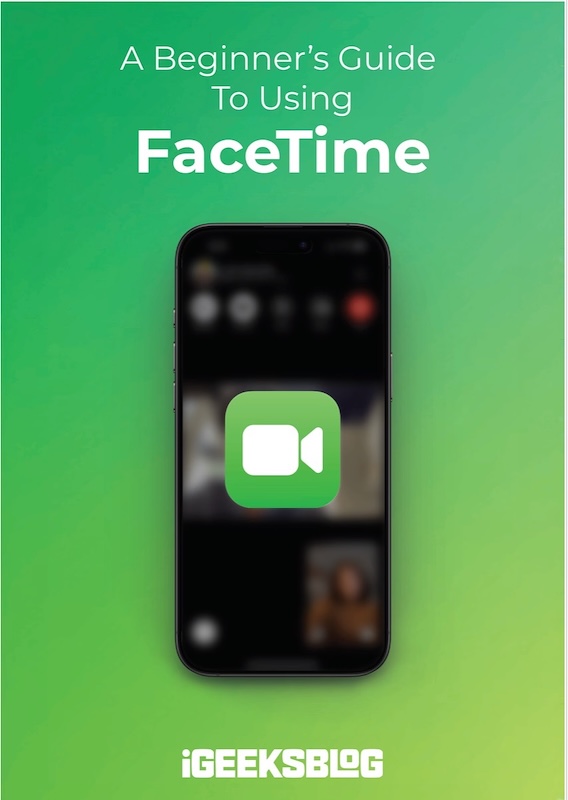
FaceTime Like a Pro
Get our exclusive Ultimate FaceTime Guide 📚 — absolutely FREE when you sign up for our newsletter below.

FaceTime Like a Pro
Get our exclusive Ultimate FaceTime Guide 📚 — absolutely FREE when you sign up for our newsletter below.
A beginner-friendly guide to setting up Git on your Mac.
If you are new to writing code or planning to collaborate on projects with other people, Git is an essential tool. It helps you organize your coding projects and reduces collaboration overhead to a great extent. Follow along, and I will show you how to download and install Git on your Mac.
Git is a free and open-source version control software that allows you to track changes in your source code. While primarily used by developers, you can use Git on macOS even for any project where managing versions would be useful—be it documents, design files, or personal notes.
Here’s how Git can prove helpful:
Git is easy to download on a Mac and works really well with the Terminal, making it an amazing tool for managing your projects.
Before we get into installation, let’s check if Git is already present on your Mac. Some versions of macOS have Git installed, if you have used tools like Xcode. You can check if yours has it using these steps:
git --version and press Return.

You should always check the version first because it saves time and avoids unnecessary installations. If you have an older version, you might want to update it (we’ll cover that too later in the guide).
There are two main ways to install Git on your Mac, and I’ll break each one down so you can choose what works best for you.
This is the easiest method if you don’t mind installing a small set of developer tools alongside Git. Xcode Command Line Tools include Git and are maintained by Apple, so you’ll get automatic updates through macOS.
git and press Return. Since Git isn’t installed, macOS will ask you to install the Xcode Command Line Tools.




git --version in Terminal. You should be able to see the installed version.I love this method because there’s no extra hassle. Plus, if you’re planning to do any development on your Mac, these tools are super useful for other tasks.
Homebrew is a package manager for macOS that allows you to install tools such as Git via command line. So, first install Homebrew on your Mac if you don’t have it. Once Homebrew is installed, proceed with the instructions below:
brew install gitgit --version. You should see the version number, like git version 2.48.2.Homebrew is awesome because it keeps everything organized and makes updating Git a breeze (more on that later). If you use command-line tools, this method feels like a natural fit.
Now that Git is installed, let’s configure it so it knows who you are. This is necessary because Git stamps your commits with your name and email, so it’s easy to see who changed what in a project. Open the Terminal app and run the following commands one by one:
git config --global user.name "Your Name" Replace “Your Name” with your real name (e.g., git config –global user.name “Ava”).
git config --global user.email "you@example.com" Use the email you intend to use with your Git commits (e.g., git config –global user.email “ava.igeeks@example.com”).git config --global core.editor "code --wait" Or, to use nano (a simple Terminal editor), use the command git config --global core.editor "nano" Write any of your desired editor command instead of “code –wait”.git config --list This displays all your configurations, like your name, email, and editor.
That’s all! You must double-check your config to ensure that everything’s good. It’s a trivial step, but it prevents headaches down the line when you’re working on projects with people.
It is important to keep Git up-to-date. New releases patch bugs, enhance performance, and introduce features that simplify your workflow. So, you should check the latest version on the official Git website at git-scm.com occasionally.
Once an update is available, follow the steps below depending on how you’ve installed Git.
If you used Homebrew:
brew upgrade git and press Return. Homebrew will download and install the latest version of Git.git --version.If you installed Git via Xcode Command Line Tools, updating macOS will also update these tools.
Signing off
Installing Git on your Mac is a great first step toward learning version control and working more efficiently on your projects. Each method I’ve described here is beginner-friendly and gets the job done. Now that Git is ready to go, you’re all set to harbor your skills. Happy coding!
You would like to read these posts as well: